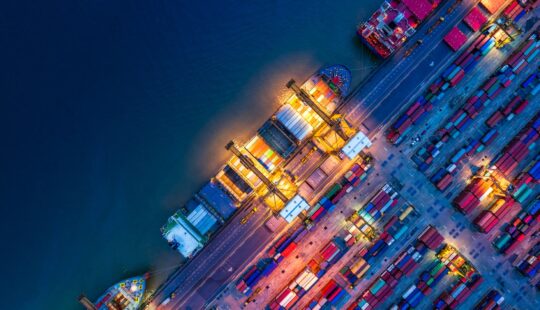Growing up, the term “on a slow boat to China” was often used to describe something that would take a very long time. Unfortunately, we are seeing the opposite term come to fruition off many major ports around the world over the past few weeks, as container ships from China and other Asian ports are lined up waiting to be unloaded.
It has been estimated that currently, the average time it takes to ship goods across the Pacific Ocean is 80 days. This is not only as long as it took Philias Fogg to travel around the world, but is twice as long as before the pandemic.
A combination of port delays, COVID-19 outbreaks, and labor shortages have threatened the holiday supplies of everything from toys and decorations to consumer electronics and furniture.
On the west coast of the U.S., the Ports of Los Angeles and Long Beach are still seeing blockages despite the move for both ports to go to 24/7 operations, as decreed by President Joe Biden.
In mid-September, when the numbers were surging:
- 76 container ships sitting off the west coast were waiting to dock
- The average container ship has about 14,000 containers
- The average value of merchandise on each container is $100,000
- A total of $106,400,000,000 of inventory just sitting in limbo, sometimes expiring, often devaluing.
This is compounded by astronomical rises in shipping costs. It is estimated that the cost to ship a container from southern China to the west coast of the U.S. is as much as $20,000, up from $3,000 post-pandemic. That is a rise of over 650%.
And when the goods finally make dry land, there is a shortage of both truck drivers to clear the docks and storage space to put them.
Why the Logjam?
I recently wrote about a phenomena called the “revenge economy” and that as a result of the vaccine rollouts, the $1.9 trillion stimulus package, restrictions starting to be lifted, shops opening, children returning to school, and employees going to work, there is a pent up demand for goods. As a result, online sales, which grew out of necessity during the pandemic, have continued, and retail sales have been ramping up.
Our global supply chain is struggling to meet the growing demand from major markets, as seen in the automotive and high tech industries due to the continuing semiconductor shortage. Or how the recent COVID-19-related shutdown of factories in Southeast Asia have impacted the sneaker and furniture industries.
And even when there were products to ship, port closures in Asia have caused a bottleneck of supplies sitting awaiting both containers to package and vessels to carry them.
All these factors have resulted in a logjam of container ships waiting to enter U.S. ports since July. And with the ports operating at full capacity, the next challenge is both how to transport the goods from the port, and where to store them.
One thing is true. The topic of supply chains, which has been front and center in all discussions for the past 18 months, is a major talking point this holiday season, and will continue to be well into 2022.
To learn more about how supply chain leaders can help minimize risk and disruption, download this recent Oxford Economics study: The Sustainable Supply Chain Paradox Research 2021.
Follow Richard on Twitter: @HowellsRichard.



